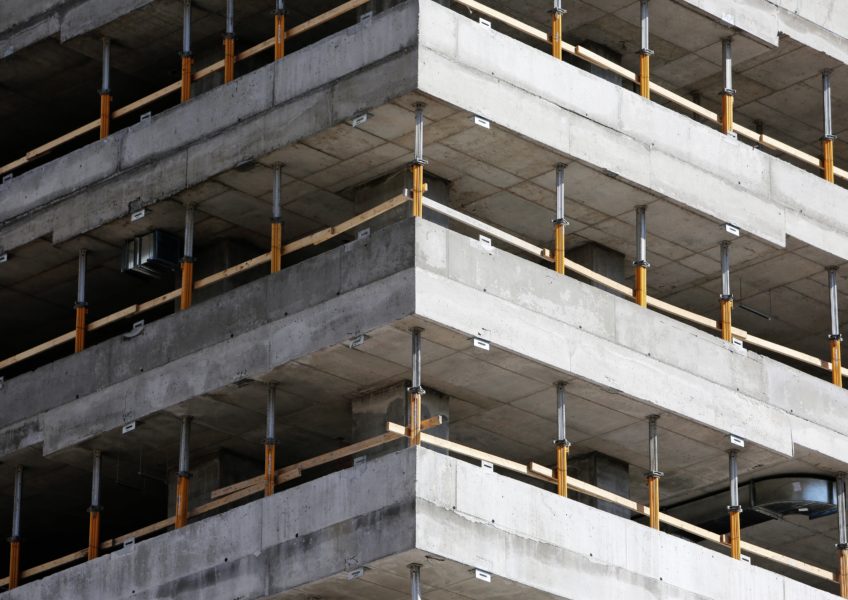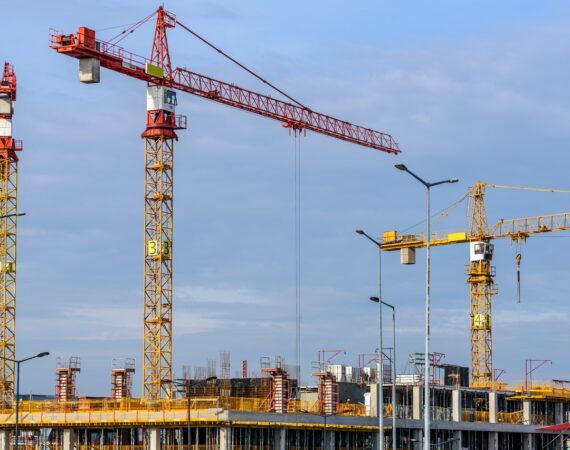How Reinforced Concrete Works
Reinforced concrete (RC) is one of humankind’s greatest innovations in building and structures. Thanks to reinforced concrete, enormous and complicated structures are made possible.
How it works is relatively simple as the basic concrete composite material encases steel reinforcement for greater strength and more durability. Typically, reinforcing incorporates steel bars – commonly known as “rebar” – which are placed inside of the future concrete component before it is poured. Modern reinforced concrete can utilize different reinforcing materials such as polymers, steel, or a composite material.
Understanding How Steel-Reinforced Concrete Works
Most people would intuitively know that by themselves steel and concrete are quite strong. The effectiveness of steel-reinforced concrete comes from the differences between how these two materials perform under similar loading conditions.
Concrete itself is a very brittle material which can withstand massive amounts of compression compression but is comparatively very weak in tension. Due to this, plain old non-reinforced concrete is not ideal for most structures because it will start to break apart under vibrations or other bending stresses such as wind loading.
Steel, on the other hand, is a ductile material which can withstand enormous tensile stresses and is comparatively weak in compression. The benefits of marrying these two materials becomes obvious. By encasing steel bars in the locations where concrete will endure the largest tensile stresses, we can create a composite structural element that is extremely strong in both compression and tension.
The History of Reinforced Concrete
Many are surprised to learn that basic concrete structures have been discovered that are as much as 8500 years old. Entering the more modern eras, the Romans are said to have nearly perfected the material. As an example of how advanced their techniques are, even fully modern marine concrete is virtually unchanged from the Roman formulas!
Iron-reinforced concrete, of course, first necessitated the invention of steel making processes which could create molded long bars. By the 1850s, Francois Coignet had begun making the first iron-reinforced concrete structures – many of which are still standing strong today.
Benefits of Reinforced Concrete
Reinforced concrete offers immense benefits which explains why it has been the building material of choice for over 100 years. Walk around any city in the World, from Los Angeles to Mumbai, and you are likely to find yourself in a jungle of reinforced concrete structures.
Reinforced concrete is:
- Exceptionally durable
- Requires little maintenance
- Excellent thermal mass
- Fire resistant
- Can use recycled steel and aggregate
- Can be poured in place or prefabricated
Understanding Reinforced Concrete
Reinforced concrete is either in situ (which means cast-in-place) or precast. Reinforced concrete works well for frame construction, slab, columns, beams, foundations, walls, or slabs. Any structure or structural component which is expected to undergo tension can benefit from reinforced concrete. The design and installation of reinforced concrete is highly regulated and well understood. There are rules for everything from maximum steel area to required clear cover above and below the reinforcements. Reinforced concrete is specially designed so that the steel will begin to yield before the concrete fails, as to provide a warning that the structure is experiencing distress. Other rules help to protect against corrosion or spalling.
The American Concrete Institute has a wealth of publications and educational tools to learn more, if interested.
Forensic Engineering Specialists
Engineering Specialists Inc. has nearly 30 years of field experience in analyzing the damage to vehicles, residential, commercial, and industrial buildings. We can work on any project in any state, nationwide. When you or your business needs to confirm the extent of damage or how to correct a problem, email us at office@esinationwide.com or call us, toll-free, at (877) 559-4010.




